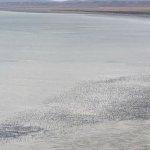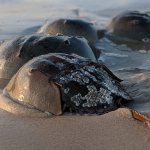Through the movements of their annual life cycle, phalaropes connect people and places across the entire hemisphere. This annual life cycle depends on the integrity and conservation of their every nesting, resting, feeding, and wintering site – often thousands of kilometers apart – forming a delicate network that sustains phalaropes and many other species of migratory shorebirds. More and more, biological networks need a social network to protect them and work to ensure their future – which was the main driver of a working group meeting in Mono Lake, California in June 2019.
The meeting brought together a group of researchers and members of 15 governmental and non-governmental organizations from 18 organizations in the Americas to discuss the most urgent research and conservation needs for two species of phalaropes: Wilson’s Phalarope (Phalaropus tricolor) and Red-necked Phalarope (Phalaropus lobatus). The gathering took place on June 19th and 20th in Lee Vining, California, on the shores of Mono Lake. This large inland sea in the Great Basin is surrounded by the Sierra Nevada Mountains, with no outlet to the ocean. Its naturally saline water provides abundant food for a large number of resident and migratory birds, which is why it was recognized as a WHSRN Site of International Importance in September 1990. Of course, it was no coincidence that Mono Lake was chosen as the site for the working group’s meeting: the most abundant migratory species at Mono Lake are Wilson’s and Red-necked Phalarope!
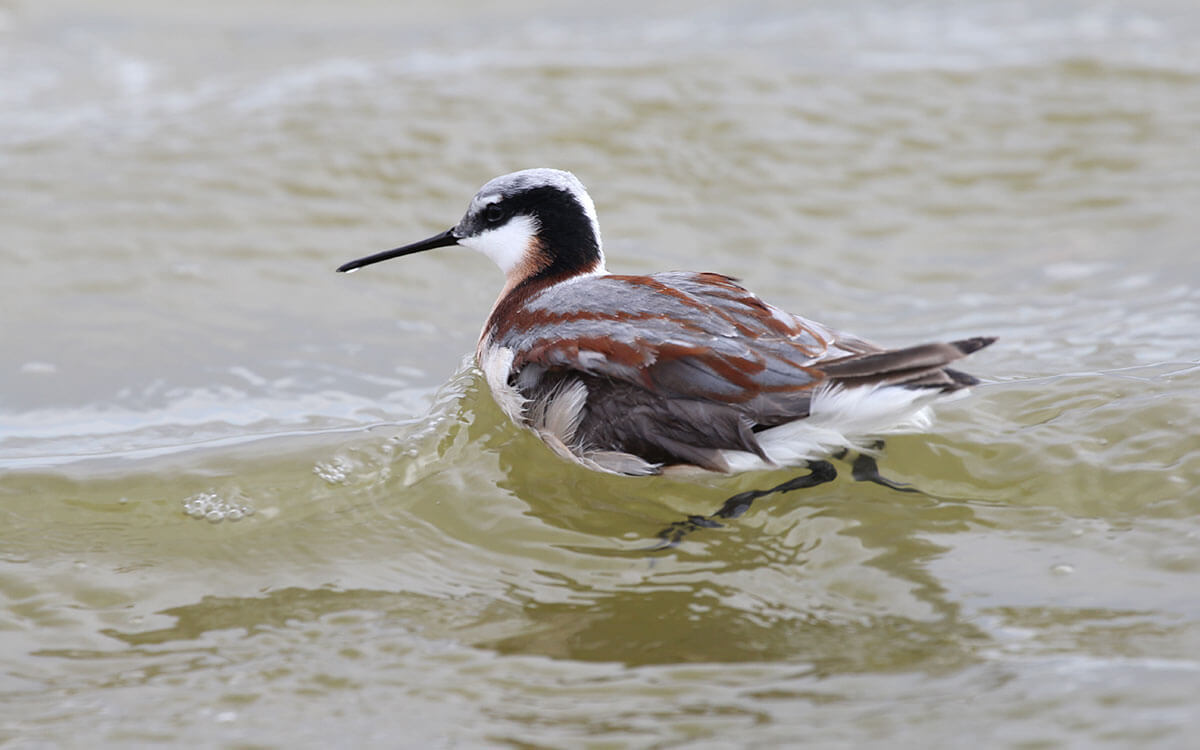
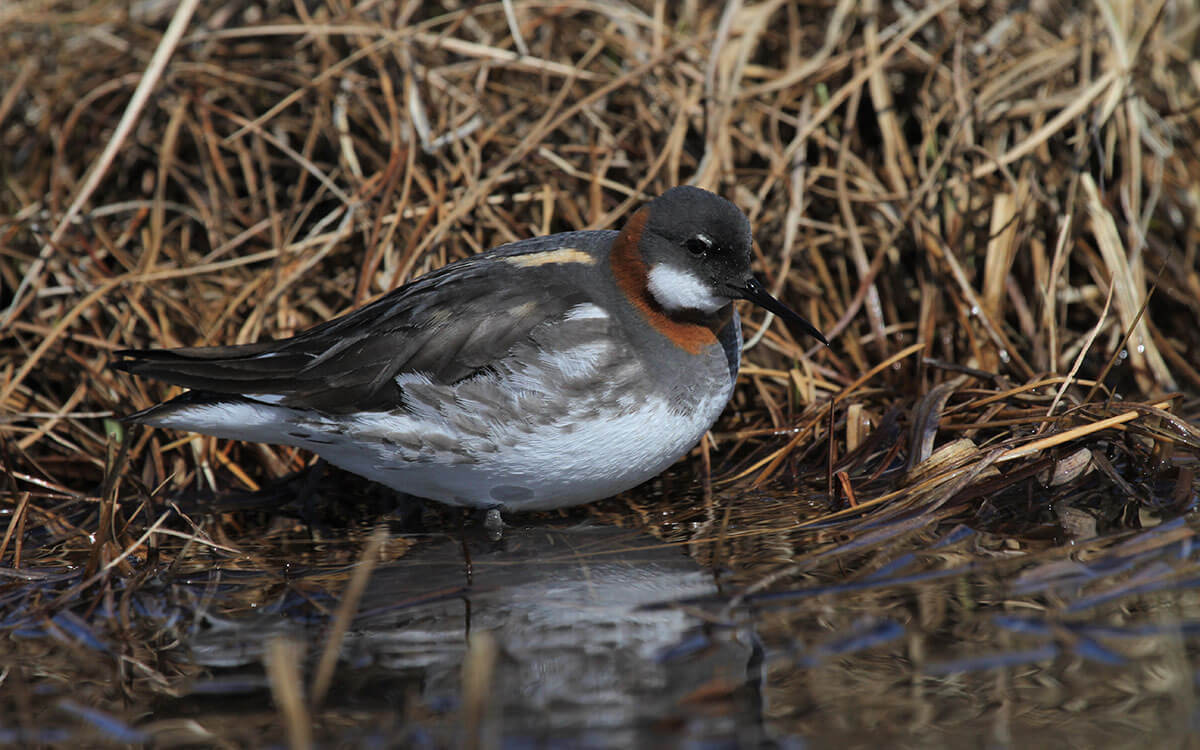
Left: Wilson’s Phalarope swimming at the Cheyenne Bottoms WHSRN Site in Kansas, USA. Photo: Monica Iglecia. Right: Red-necked Phalarope on breeding grounds in the Arctic National Wildlife Refuge, Alaska, USA. Photo: Brad Winn.
Ryan Carle (of the non-profit Oikonos) and Margaret Rubega (University of Connecticut) organized the meeting. Both have spent years of their lives on the shores of Mono Lake, conducting research and documenting observations of these two species of phalaropes. Thanks to their initiative, during the two day meeting the group worked intensively to discuss the primary threats these species are facing and define the priority research and conservation actions that must be carried out to ensure these birds’ future.
The group unanimously agreed that the primary need is to fill the huge information gaps that currently exist for both species. Without certainty about key aspects such as their current population trends, diet composition at different periods of their annual cycle, the migration timing and main stopover sites, it is incredibly difficult to determine what immediate conservation actions will have a positive impact on phalarope populations. Moreover – being extremely optimistic – this information is important to determine if these conservation actions are even necessary, or if both of these species could be counted among the few shorebirds whose populations have not been experiencing major declines in recent years.

The limestone tufa towers of Mono Lake, against a backdrop of the Sierra Nevada Mountains. Photo: Melissa Gabrielson.
This information gap is partly due to certain characteristics of each of these phalarope species, which present significant challenges for field work. Unlike the rest of the shorebirds, phalaropes are a highly aquatic group, and are rarely seen on the shore at all (especially Red-necked Phalaropes, that spend the boreal winter far out at sea). They are also highly mobile, particularly in the case of Wilson’s Phalaropes, which frequently alternate between different sites within a given season. Both are very small birds, and congregate in groups of thousands of individuals. To capture them is extremely difficult, and their small size makes it harder to track their movements, as most existing tag technology light enough for birds this size requires recapturing each individual to collect the data.
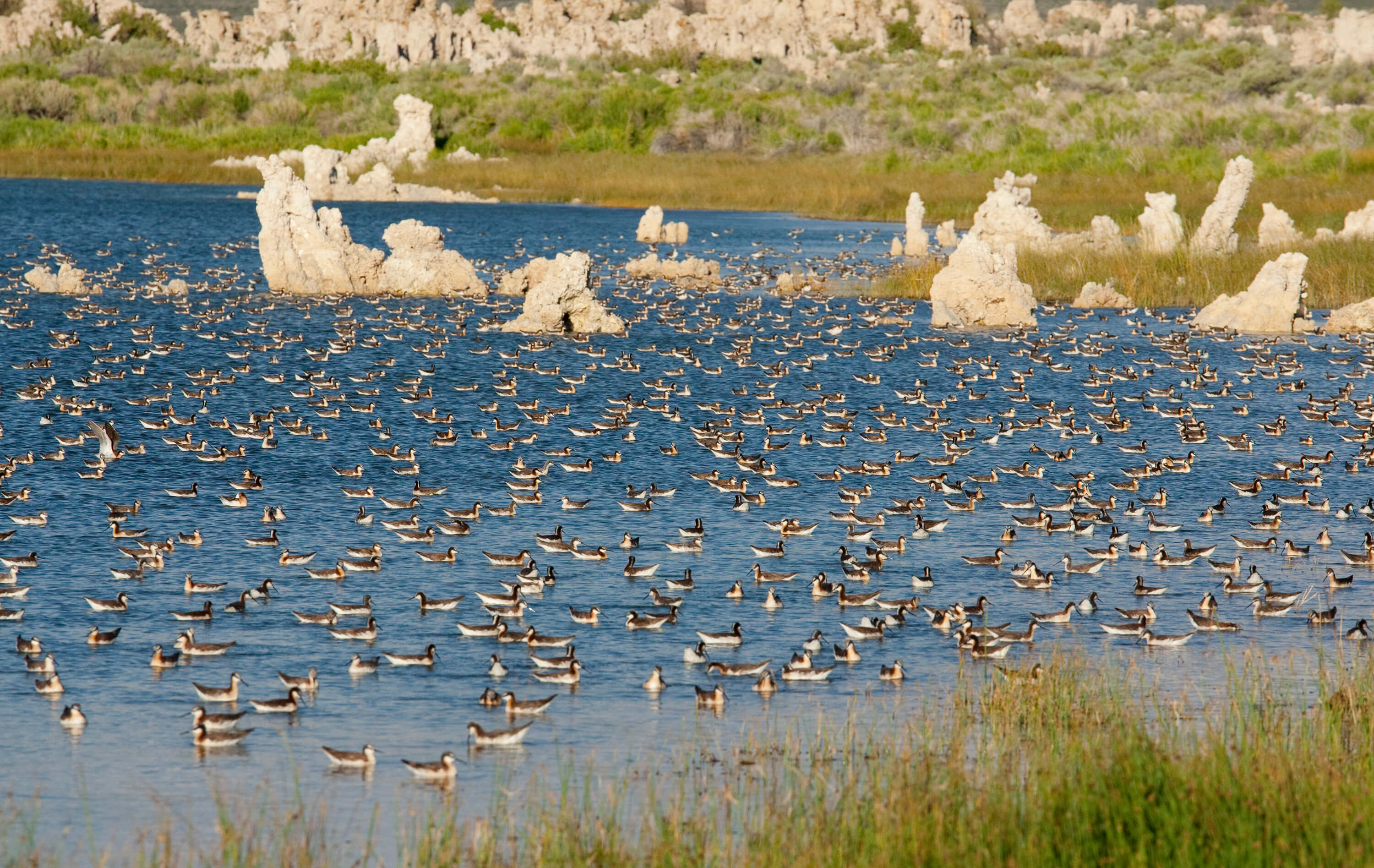
A large flock of Wilson’s Phalaropes at Mono Lake. Photo: Marie Read.
Much of the discussion at the meeting was focused on how to address these challenges – which was very productive thanks to the varied expertise of professionals in the group, each contributing different perspectives. The working group agreed on five primary next steps: create an international network, with shared work protocols; work to determine the current population status of both species; coordinate consistent censuses to estimate abundance at different sites, and work to increase confidence in these estimates; coordinate simultaneous counts across the hemisphere; generate and manage a shared database; work to create a MOTUS detection network to better understand phalarope migration, residence times, and turnover rates at different sites; and continue to conduct research on key aspects of their annual life cycle, such as: habitat selection, diet composition, and the impact of different threats the species face.
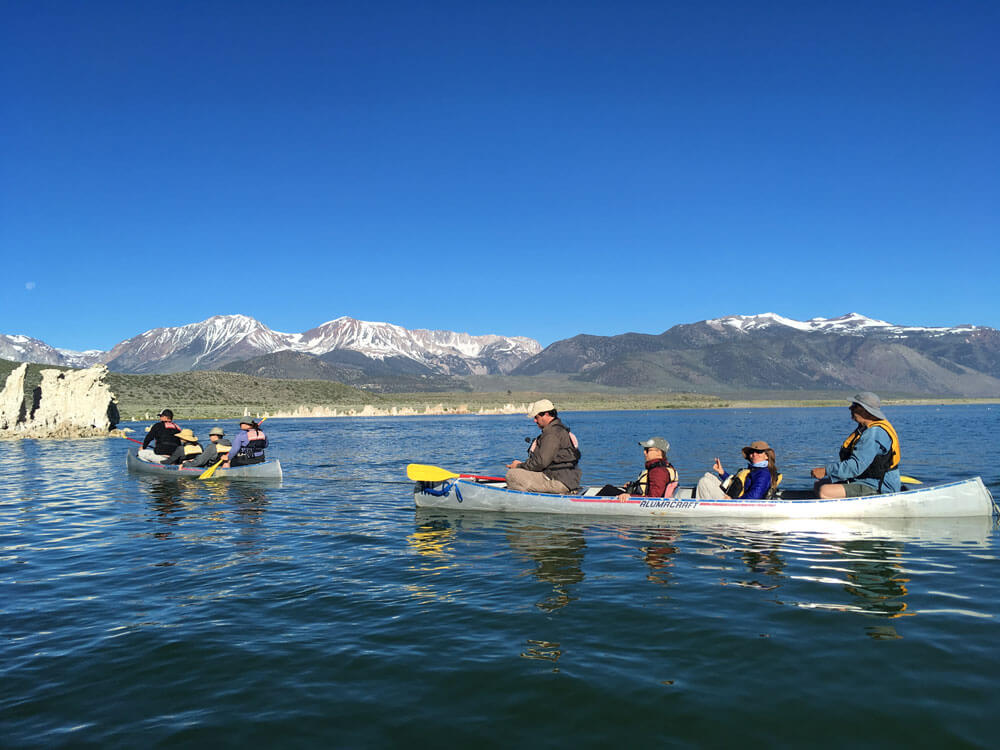
Meeting participants explore Mono Lake by canoe. Photo: Ryan Carle.
But without a doubt, the most important result of this meeting was the creation of a working group made up of people motivated by a shared interest: the conservation of phalaropes and their habitats. Much remains to be done, as the journey to the end goal has just begun. But all journeys begin with a first step! And there is no better first step than one generated by a group: uniting ideas, resources, and energies. Connected together, we can accomplish so much more.
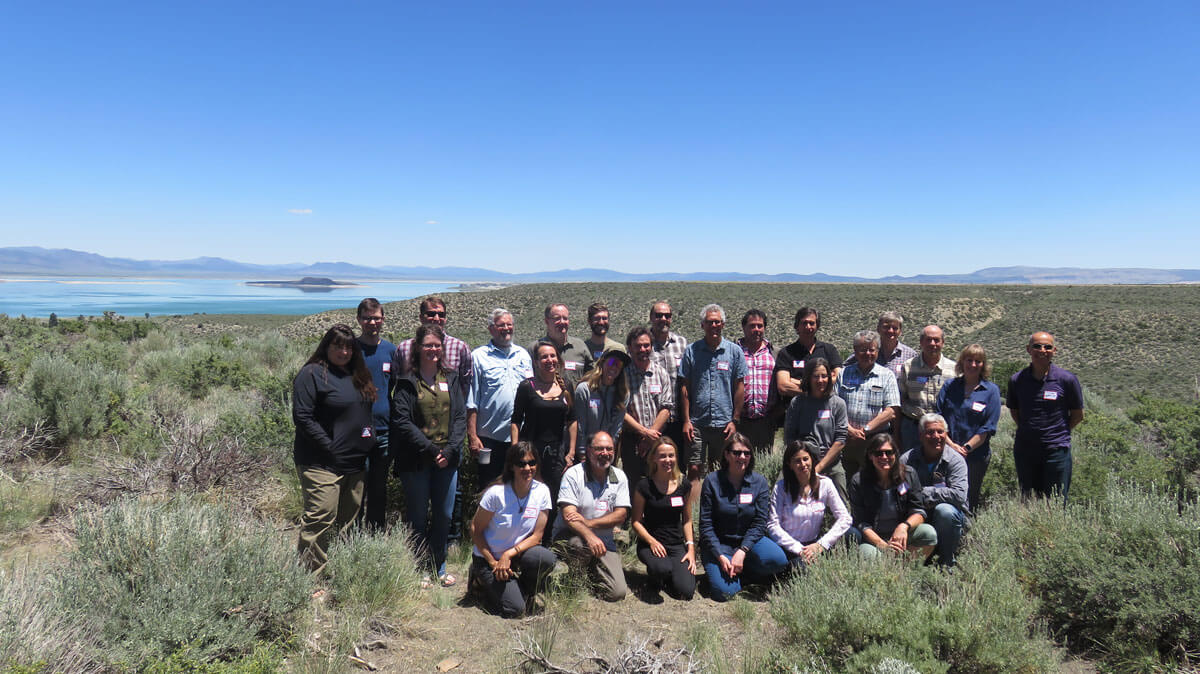
Members of the newly formed International Phalaropes Working Group, during the group’s first meeting at Mono Lake, California. Photo: Ryan Carle.
For more information, visit http://oikonos.org/shorebird-conservation/
Cover Photo: Wilson’s Phalaropes at Quivira National Wildlife Refuge, Kansas, USA. Photo: Maina Handmaker.





